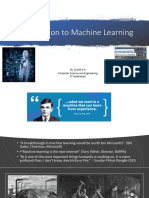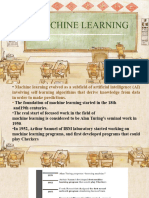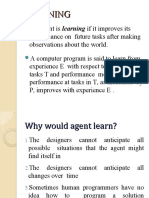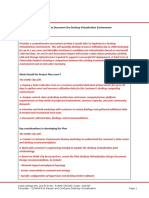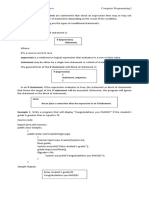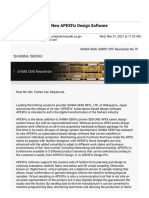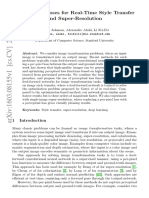0% found this document useful (0 votes)
8 views20 pagesIntro To ML
The document outlines various methods and concepts in applied management research, focusing on machine learning (ML) and deep learning (DL). It discusses the differences between supervised, unsupervised, and reinforced learning, as well as parametric and non-parametric models. Additionally, it covers specific algorithms such as linear and logistic regression, their applications, and their pros and cons.
Uploaded by
simonecarloseghezziCopyright
© © All Rights Reserved
We take content rights seriously. If you suspect this is your content, claim it here.
Available Formats
Download as PDF, TXT or read online on Scribd
0% found this document useful (0 votes)
8 views20 pagesIntro To ML
The document outlines various methods and concepts in applied management research, focusing on machine learning (ML) and deep learning (DL). It discusses the differences between supervised, unsupervised, and reinforced learning, as well as parametric and non-parametric models. Additionally, it covers specific algorithms such as linear and logistic regression, their applications, and their pros and cons.
Uploaded by
simonecarloseghezziCopyright
© © All Rights Reserved
We take content rights seriously. If you suspect this is your content, claim it here.
Available Formats
Download as PDF, TXT or read online on Scribd
/ 20





























